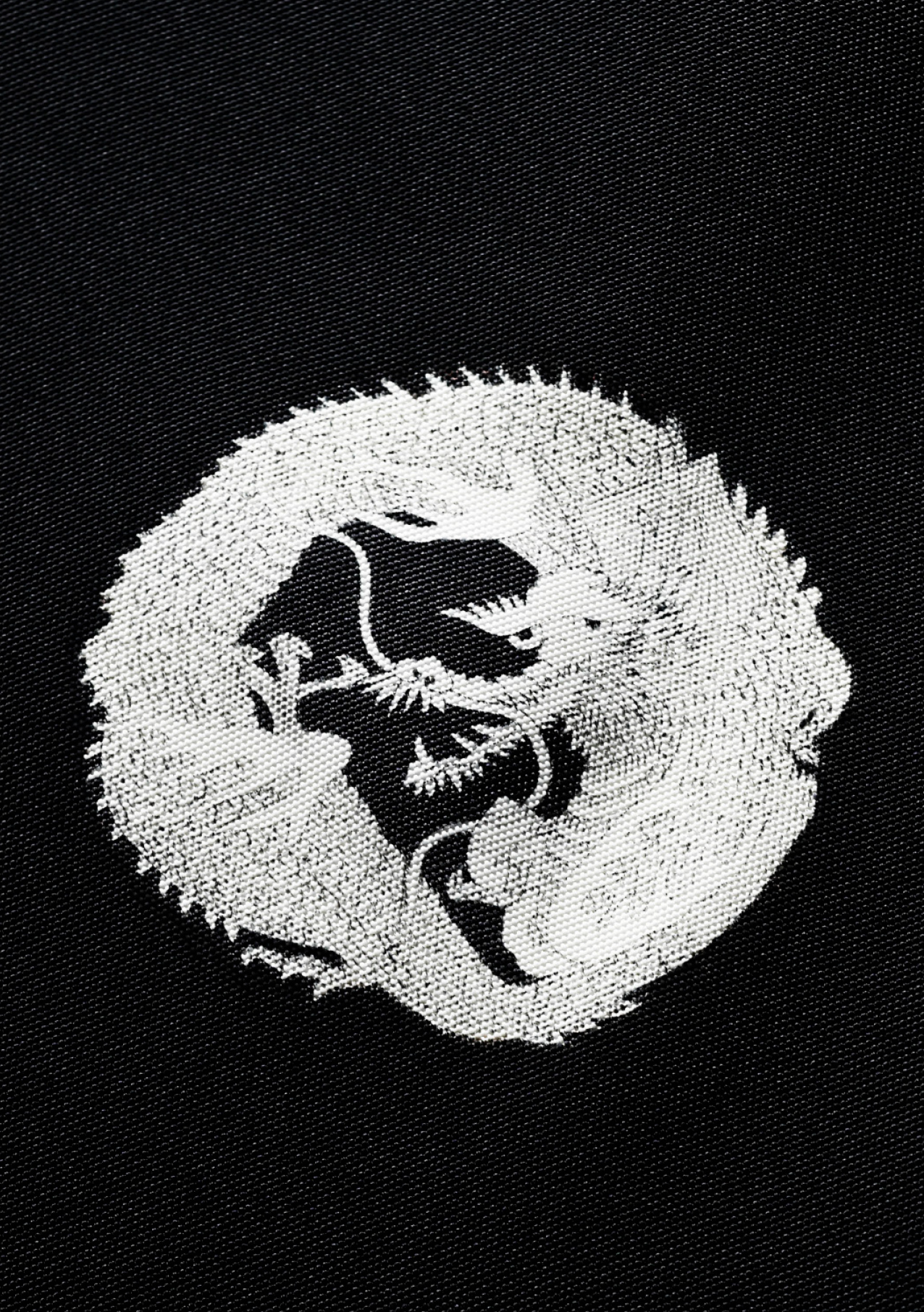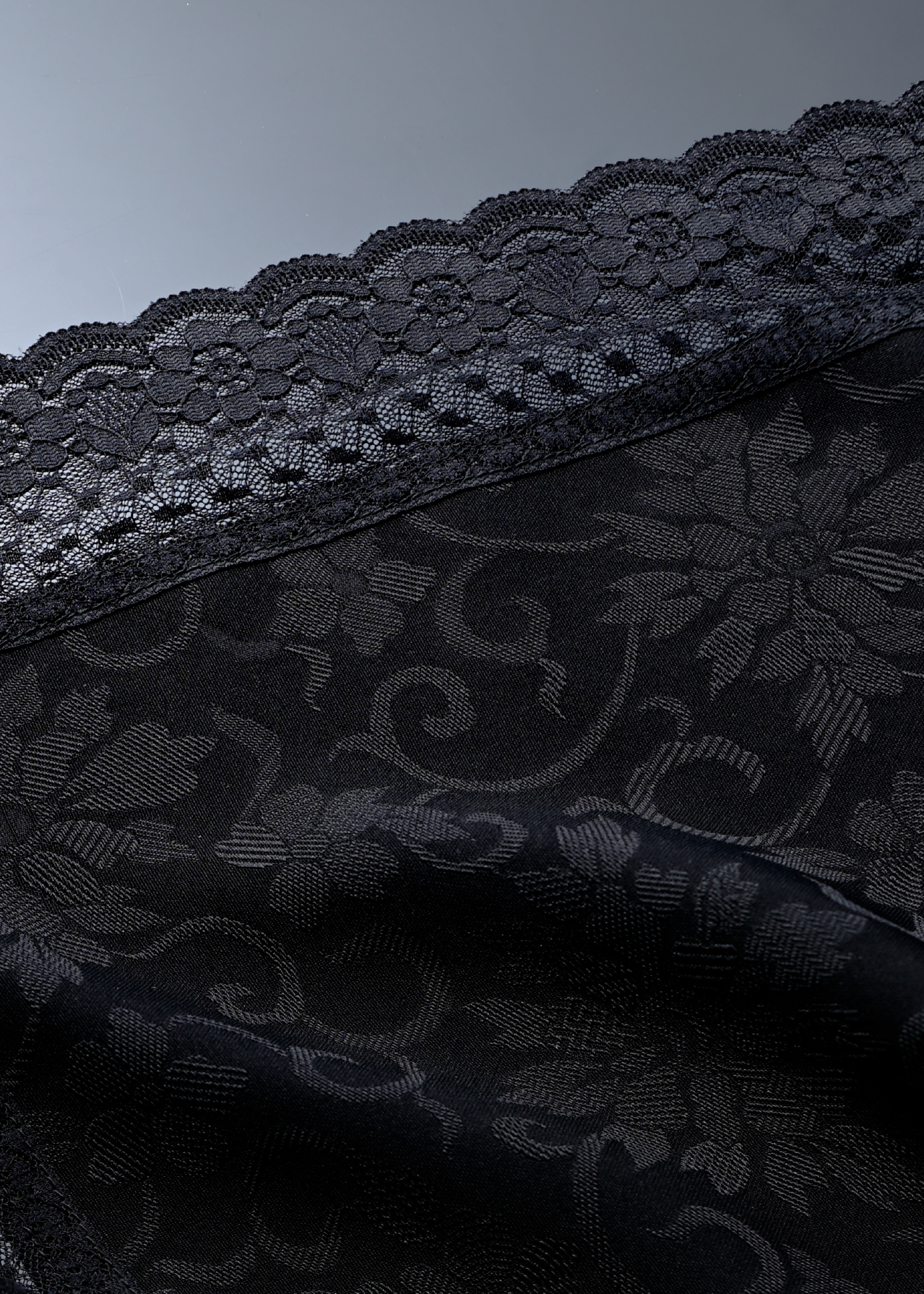京黒紋付染 京都黒染工業協同組合
KYO-KUROMONTSUKIZOMEBLACK DYEING 1
1
- 家紋「龍の丸」。
冠婚葬祭の衣装として、女性は黒留袖、男性は紋付羽織袴に用いられる京黒紋付染は、平安時代中期(10世紀)頃にはじまり、安土桃山時代(17世紀)に確立したといわれています。江戸時代中期(18世紀)以降は武士に愛用されるようになり、明治時代(19世紀)に紋付羽織袴が国民の礼服に制定されたことにより、一般にも広まりました。黒の濃さや色の深さを出すために、先に赤や青に染めた後に黒色染料で仕上げる紅下黒、藍下黒などがあり、それらは、“黒よりも黒く”といわれるほどの風格をもちます。さらに丸く染め抜いた3ないし5カ所に、家紋を手描きもしくは型刷りで加えます。家紋は約2万5000種あるとされていますが、一般的に用いられているのは約4000種です。現在は一部の技術を用いて、小物等に加工するなどアレンジをして販売されているものもあります。
Kyo-kuromontsukizome is a dyed black fabric typical of Kyoto which is used to create formal and ceremonial costumes, including the elegant black tomesode for women and the men’s haori hakama with its family crest. The origins of this fabric date to the middle Heian period (10th century) and its use was fully established during the Azuchi-Momoyama period (17th century). Starting in the middle of the Edo period (18th century), samurai began to wear kuromontsukizome, and since the Meiji period (19th century), the crested haori hakama has been established as the national formal wear. Benishita-guro or aishita-guro are two kinds of dye used in a preliminary dyeing process which produces a "blacker than black" result. This effect is obtained by dyeing the fabric first in red or blue before finishing with black dye, creating a jet black with an extra depth of color. In addition, family crests (kamon) are printed by hand or pattern-printed on three to five areas left white in the dyeing process. It is said that there are about 25,000 types of family crests, but about 4000 types are generally used today. Today, smaller items are also being produced using part of these traditional techniques.
 2
2
- : 黒染めした正絹の膝掛け。
(1,2 すべて馬場染工業株式会社)
1: "Ryūnomaru" family crest. 2: Black-dyed silk rug. (1,2 Banba Senkōgyō)

